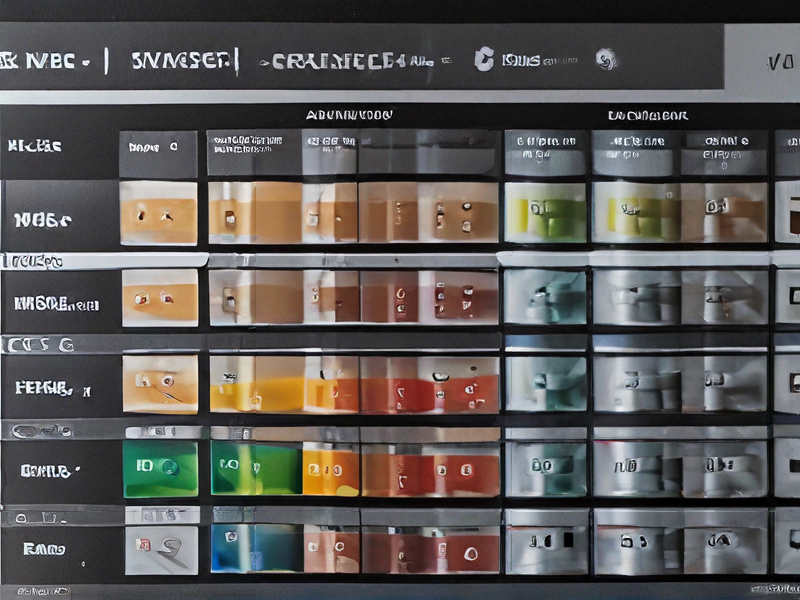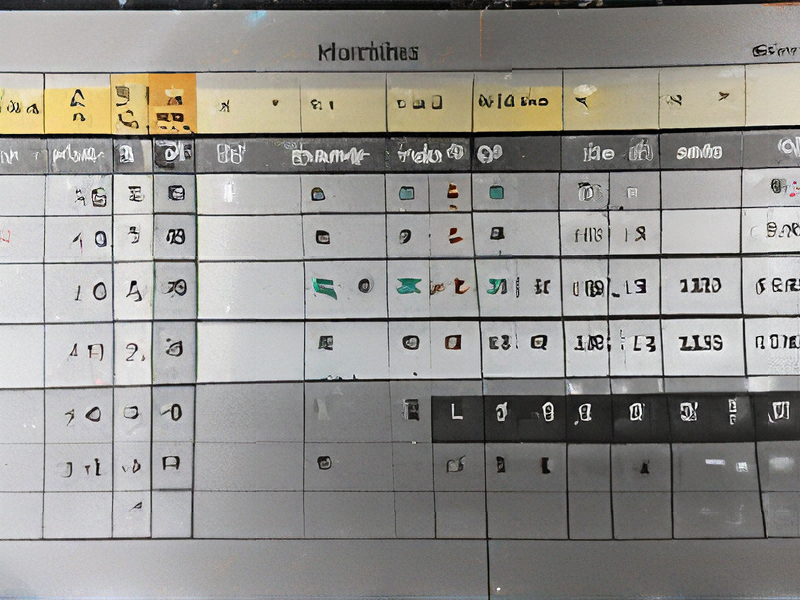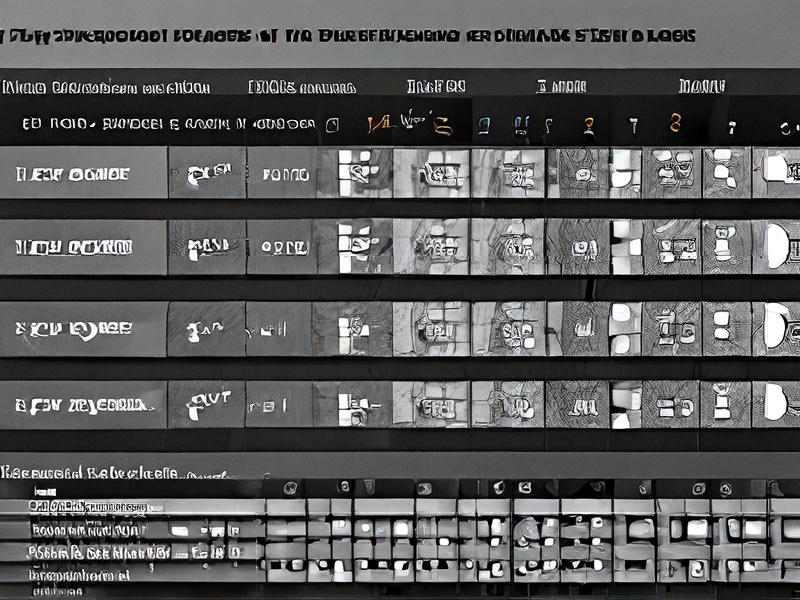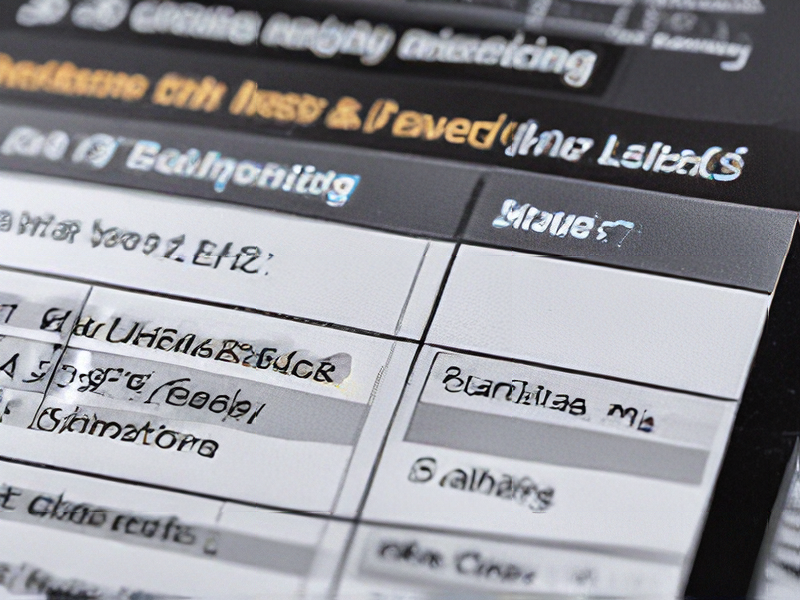Technology and Applications of machined finish chart
A machined finish chart categorizes surface finishes based on machining operations, crucial for ensuring parts meet design specifications and functional requirements. It typically includes:
1. Surface Roughness Parameters: Charts often detail roughness average (Ra), root mean square (Rq), and maximum roughness depth (Rmax). These parameters quantify surface texture, influencing part performance and aesthetics.
2. Machining Processes: Each finish type corresponds to specific machining methods:
– Turning: Produces cylindrical parts with Ra values typically ranging from 0.8 to 12.5 µm, suitable for shafts and axles.
– Milling: Offers versatility with Ra values from 1.6 to 25 µm, ideal for complex shapes and flat surfaces.
– Grinding: Yields high precision with Ra values as low as 0.1 µm, crucial for tight tolerance applications such as bearings.
3. Applications: Charts categorize finishes by application suitability:
– Functional Surfaces: Require precise fits and reduced friction, as seen in engine components.
– Aesthetic Surfaces: Demand smooth appearances, found in consumer products like appliances.
4. Material Considerations: Different materials affect achievable finishes. Harder materials may require grinding for fine finishes, while softer ones can be turned or milled.
5. Quality Control: Charts assist in quality assurance by specifying acceptable ranges for each finish type, ensuring parts meet performance expectations.
Understanding a machined finish chart aids engineers in selecting appropriate machining methods and achieving desired surface characteristics, essential for ensuring part functionality, longevity, and aesthetic appeal across various industries.

Quality Testing Methods for machined finish chart and how to control quality
Quality Testing Methods for Machined Finish
1. Visual Inspection:
– Purpose: Detects obvious surface defects.
– Method: Inspect parts under good lighting; use magnification if needed.
– Control: Train inspectors and use standardized lighting and magnification levels.
2. Surface Roughness Measurement:
– Purpose: Quantifies surface texture.
– Method: Use profilometers or roughness testers.
– Control: Calibrate instruments regularly; define acceptable roughness ranges.
3. Dimensional Inspection:
– Purpose: Ensures parts meet dimensional specifications.
– Method: Use micrometers, calipers, or coordinate measuring machines (CMMs).
– Control: Maintain instrument calibration; implement statistical process control (SPC) charts.
4. Hardness Testing:
– Purpose: Verifies material hardness and consistency.
– Method: Use Rockwell, Vickers, or Brinell hardness testers.
– Control: Regularly calibrate testers; verify with reference materials.
5. Nondestructive Testing (NDT):
– Purpose: Detects internal defects without damaging the part.
– Method: Use ultrasonic, radiographic, magnetic particle, or dye penetrant testing.
– Control: Certified NDT operators; follow standardized procedures.
Quality Control Techniques
1. Statistical Process Control (SPC):
– Method: Monitor and control machining processes using control charts.
– Benefit: Detects process variations early, reducing defects.
2. Six Sigma:
– Method: Use DMAIC (Define, Measure, Analyze, Improve, Control) framework.
– Benefit: Reduces variability and improves process capability.
3. Total Quality Management (TQM):
– Method: Company-wide approach involving all employees.
– Benefit: Promotes continuous improvement and customer satisfaction.
4. ISO 9001 Certification:
– Method: Implement and maintain a quality management system.
– Benefit: Standardizes processes and improves consistency.
By integrating these methods and controls, manufacturers can ensure high-quality machined finishes, meeting specifications and customer expectations.

Tips for Procurement and Considerations when Purchasing from machined finish chart
When purchasing from a machined finish chart, consider these key procurement tips:
1. Surface Requirements: Understand the specific surface finish needed for your application. Machined finish charts typically classify finishes based on roughness average (Ra) or other parameters like Rz or RMS. Ensure the chosen finish aligns with functional and aesthetic requirements.
2. Material Compatibility: Different materials (metals, plastics, composites) may respond differently to machining processes and finishes. Verify that the finish you choose is suitable for the material’s properties and intended use.
3. Supplier Capability: Evaluate the machining capabilities of potential suppliers. Ensure they can consistently achieve the finish specified on the chart and have a track record of quality in similar projects.
4. Cost and Lead Time: Machining complexity and surface finish can impact cost and lead times significantly. Obtain quotes from multiple suppliers to compare pricing and delivery schedules.
5. Quality Assurance: Implement quality assurance measures to verify that machined parts meet required specifications. Inspections and tests should be conducted to ensure consistency and compliance with finish standards.
6. Environmental Considerations: Machining processes can generate waste and emissions. Consider suppliers’ environmental practices and certifications if sustainability is a concern.
7. Communication and Documentation: Clearly communicate your requirements regarding surface finish. Ensure all agreements are documented in contracts or purchase orders to avoid misunderstandings.
By focusing on these considerations, you can effectively navigate the procurement process when selecting surface finishes from a machined finish chart, ensuring that your parts meet both functional and aesthetic standards while optimizing cost and lead time efficiencies.

FAQs on Sourcing and Manufacturing from machined finish chart in China
FAQs on Sourcing and Manufacturing from Machined Finish Chart in China
1. Why source machined parts from China?
China offers competitive pricing, advanced manufacturing capabilities, and a vast supply chain network. These factors contribute to cost savings, quick turnaround times, and the ability to handle complex and high-volume orders.
2. What is a machined finish chart?
A machined finish chart outlines the surface roughness and texture specifications for machined parts. It helps ensure consistency and quality in the manufacturing process by setting standards for surface finishes.
3. How do I choose the right manufacturer in China?
Consider the manufacturer’s experience, certifications (such as ISO 9001), production capabilities, quality control processes, and customer reviews. Visiting the facility or having a third-party inspection can also be beneficial.
4. What are common surface finishes available?
Common finishes include rough machining, fine machining, grinding, honing, lapping, and polishing. Each finish has different roughness measurements, typically denoted in micrometers (µm) or microinches (µin).
5. What are the quality control measures for machined parts?
Quality control measures include material inspection, dimensional verification, surface roughness testing, and hardness testing. Manufacturers often provide inspection reports and certificates of conformity.
6. How do I communicate my finish requirements?
Use the machined finish chart to specify the exact roughness value required. Provide detailed drawings and specifications, and ensure clear communication through technical documentation.
7. What are the typical lead times?
Lead times vary based on the complexity and volume of the order. Standard parts may take a few weeks, while custom or high-precision components might require longer. It’s important to discuss timelines upfront.
8. Are there risks involved in sourcing from China?
Risks include quality inconsistencies, communication barriers, intellectual property concerns, and logistical challenges. Mitigating these risks involves thorough vetting, clear contracts, and regular quality checks.
9. What about logistics and shipping?
Logistics include managing customs, tariffs, and shipping methods (air or sea). Partnering with a reliable freight forwarder and understanding Incoterms (like FOB or CIF) is crucial for smooth shipping.
10. How can I ensure intellectual property protection?
Sign non-disclosure agreements (NDAs) and non-compete clauses. Work with legal experts familiar with Chinese IP law and register patents or trademarks if necessary.

